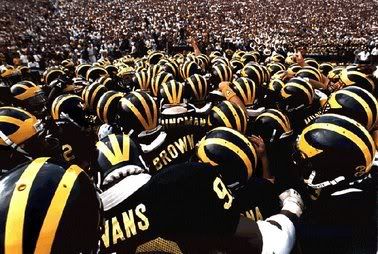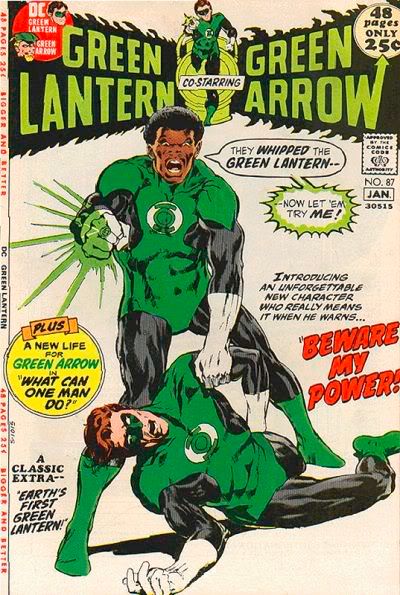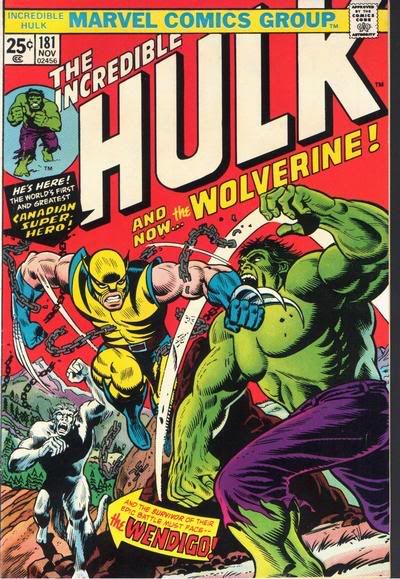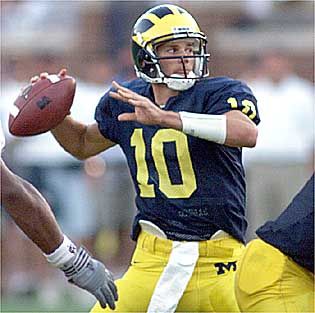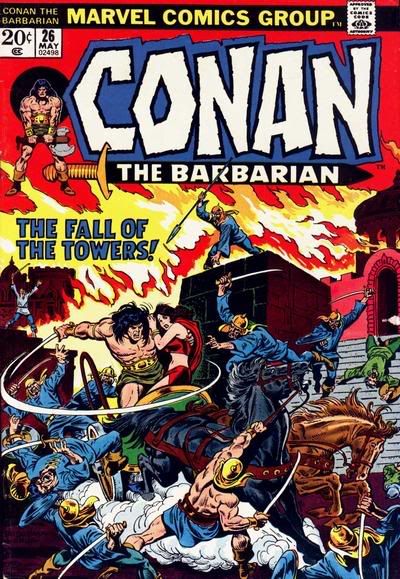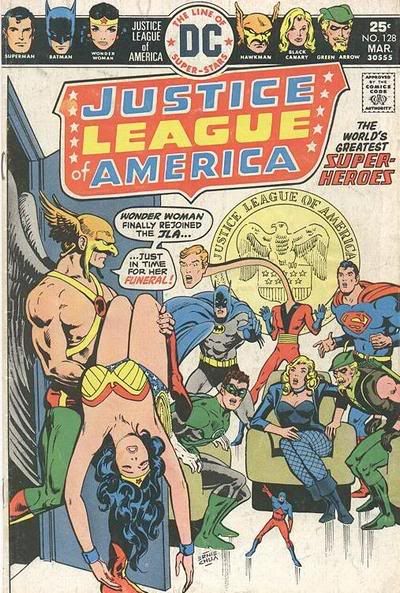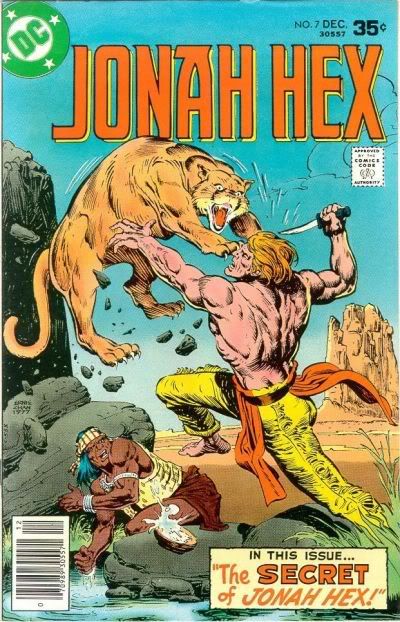This is the thirty-fifth in a series of examinations of comic book urban legends and whether they are true or false. Click here for an archive of the previous thirty-four.
Let's begin!
COMIC URBAN LEGEND: Elliot S! Maggin's first comic book work was originally written for a college class.
STATUS: True
Awhile back, in this here space, I talked about Elliot S! Maggin's big breakout work in comics ("Must There Be a Superman?"). However, Maggin's FIRST comic work also has a very interesting pedigree.
Appearing in Green Lantern & Green Arrow #87 (which was also the first appearance of John Stewart!!!), Maggin's first story was a Green Arrow back-up story, illustrated by Neal Adams.
I will allow Maggin himself to explain the genesis of the story (from this interview with Jayme Lynn Blaschke):
"What Can One Man Do?" was a term paper at Brandeis. My junior year there I took an American history course that involved a section on mass media taught by a graduate student. I wanted to illustrate that comic books were useful as an ideological tool. I had read that comics in South America and elsewhere were used by governments and anti-government insurgent groups to make their cases through story narrative to their constituencies, and I thought that countries with lower literacy rates probably did not have a monopoly on the medium's effectiveness. So I chose Green Arrow because he was the most overtly politically aware of the popular characters of the time. I gave him a left-leaning personal crisis -- imposing pretty much my own political philosophy and my own speech patterns at the time (the latter were a bit quirky, even by the day's standards) -- and had that determine the direction of his public life. It was a simple story, but I particularly liked the little touches that I used to try to make it distinctive: quoting Hemingway (as Denny had quoted Mailer a few months earlier) and using a bit of contemporary jargon.
I got a B+ on the paper and thought I deserved an A. So I sent it to DC to make that point to my instructor. I did, as it happens, but the semester was over by the time I got my answer from Julie Schwartz and the publication never affected my grade. Not that I thought it would.
I wonder if anyone else's first two comic stories have that interesting of a background?
COMIC URBAN LEGEND: Wolverine's costume was patterned in part on the uniforms of the Michigan Wolverines football team.
STATUS: False
A few years back, a reader of Bob Rozakis' column asked the question, "Was Wolverine's costume inspired by the University of Michigan football uniforms? If you look at the "flying wing" design on their helmets, it's quite like the shape of his mask."
Bob did not have an answer, but to show what the reader was thinking, here are the Wolverines' helmets and Wolverine as he first appeared...
A little while later, another reader offered up, "Dunno about Wolverine's costume being inspired by the U Michigan football team's helmets, but either his yellow (or more properly, maize) and blue costume colors were inspired by the U Michigan's team colors being those and the team nickname being the Wolverines or else we've got a major ridiculous coincidence."
Here are their team colors...
Luckily, Bob had Len Wein ready with a reply, "Trust me, the U of M football team was in NO WAY an influence on the design of Wolverine's original costume. Since I stood at John Romita's shoulder as we designed it together, I can absolutely guarantee it. We were just looking for images that evoked a Wolverine, hence the black slash/stripes and the earlike black thingies that have evolved into huge earwings. Just thought you'd like to know."
So Wolverine and Tom Brady have one less thing in common now.
COMIC URBAN LEGEND: Ernie Chan had to be credited under a different name for years due to a typographical error.
STATUS: True
Since his debut on issue #26 in 1973, Ernesto "Ernie" Chan has inked more Conan pages than any other artist in comic history.
However, for a number of years, Chan was forced to go under a different name, all due to a typographical error.
Born in the Philippines in 1940, Chan worked in the Philippines comic industry, along such great Filipino artists as Alfredo Alcala, Tony DeZuniga, Nestor Redondo, Danny Bulandi, Romeo Tanghal, etc.
DeZuniga was one of the first Filipino artist to hit it big in America, so Chan came to America to apprentice with him in the very early 70s, and eventually Chan got work at DC Comics and then Marvel, eventually becoming the longtime inker on Conan.
However, as you might notice from the number of covers Chan did for DC in the mid-70s (and he did a LOT of them), he had an interesting credit - Ernie CHUA.
As Chan explained in a 1992 Marvel Age (#109) interview with Barry Dutter:
BD: Originally you worked under the name of Ernie Chua, is that correct?
EC: I started out using Ernie Chua as my name, because that is the name I had on my passport. I had to go by my legal name, for tax purposes and stuff like that.
BD: Is Chua your real name?
EC: No, that was a typographical error on my birth certificate that I had to use until I had a chance to change it to Chan when I got my citizenship in 1976.
BD: Now your name is legally Ernie Chan?
EC: That's my legal and true name, yes.
As you can see, those covers first started popping up in 1977, credited to Ernie CHAN.
According to Bob Rozakis, Chan told him the reason that the immigration officer did not just correct the typo was because he thought it would be better for Ernie, as "there are too many Chans in the U.S."
Pretty scary, eh?
Well, that's it for this week, thanks for stopping by!
Feel free to drop off any urban legends you'd like to see featured!!

